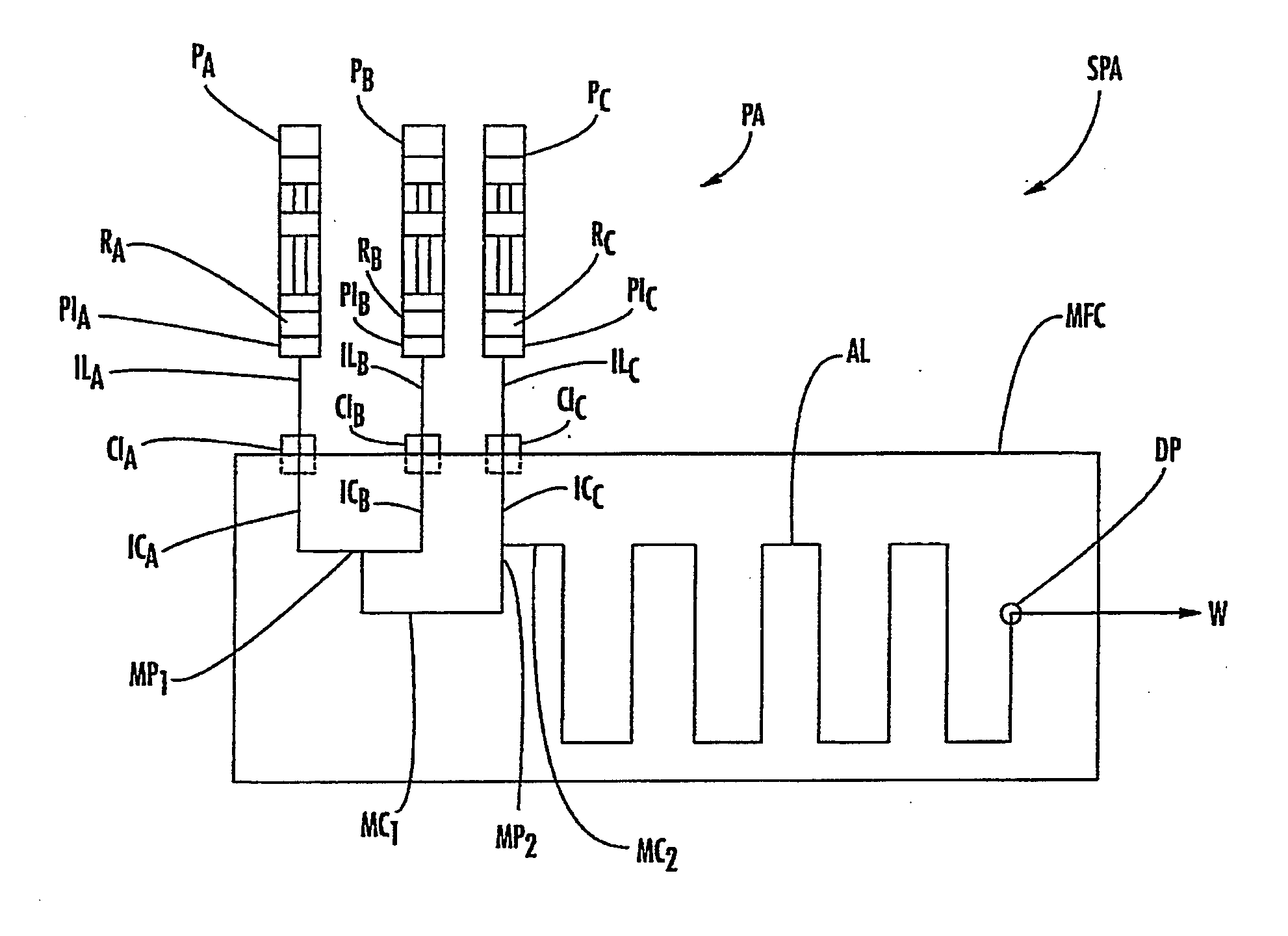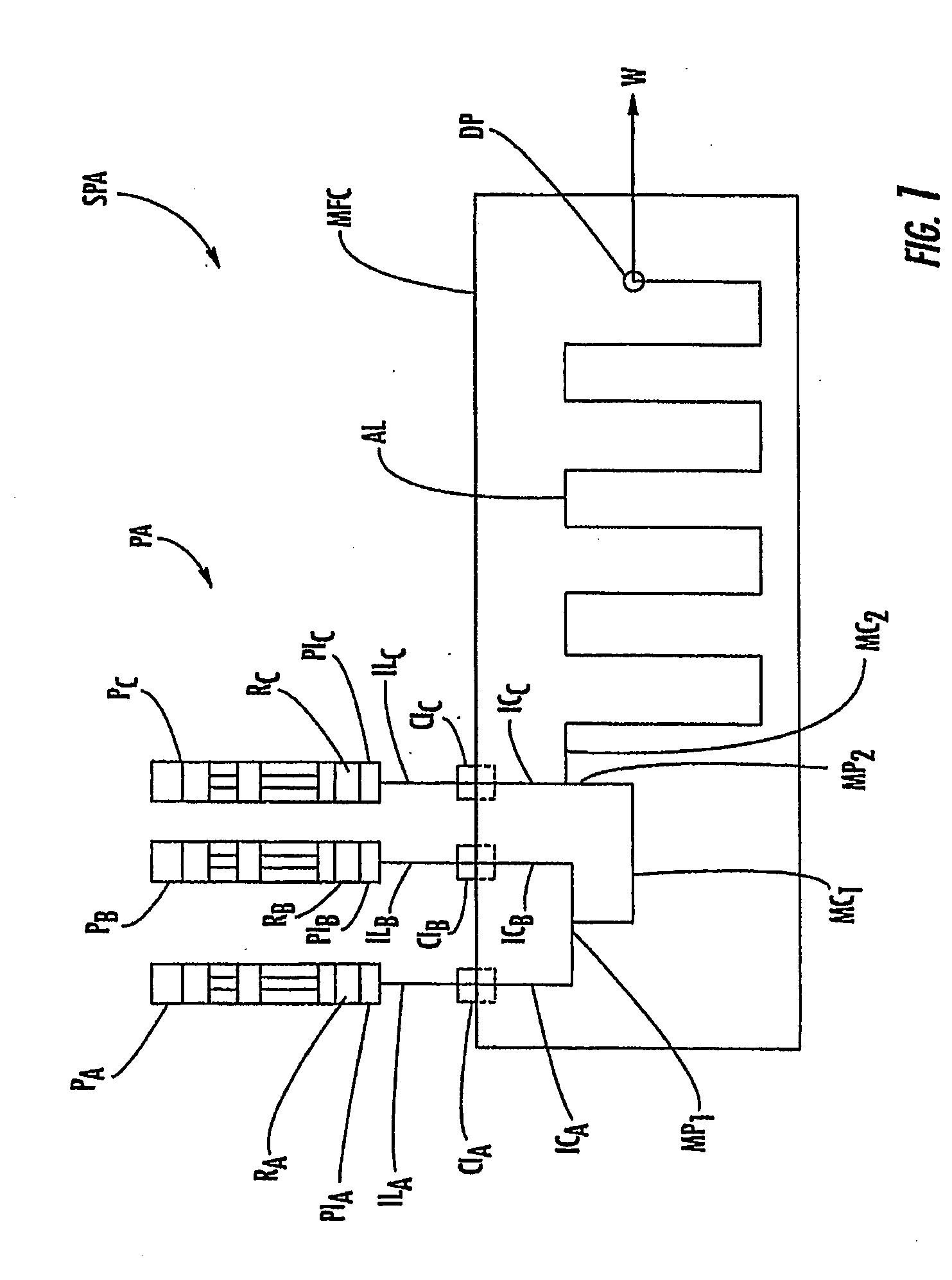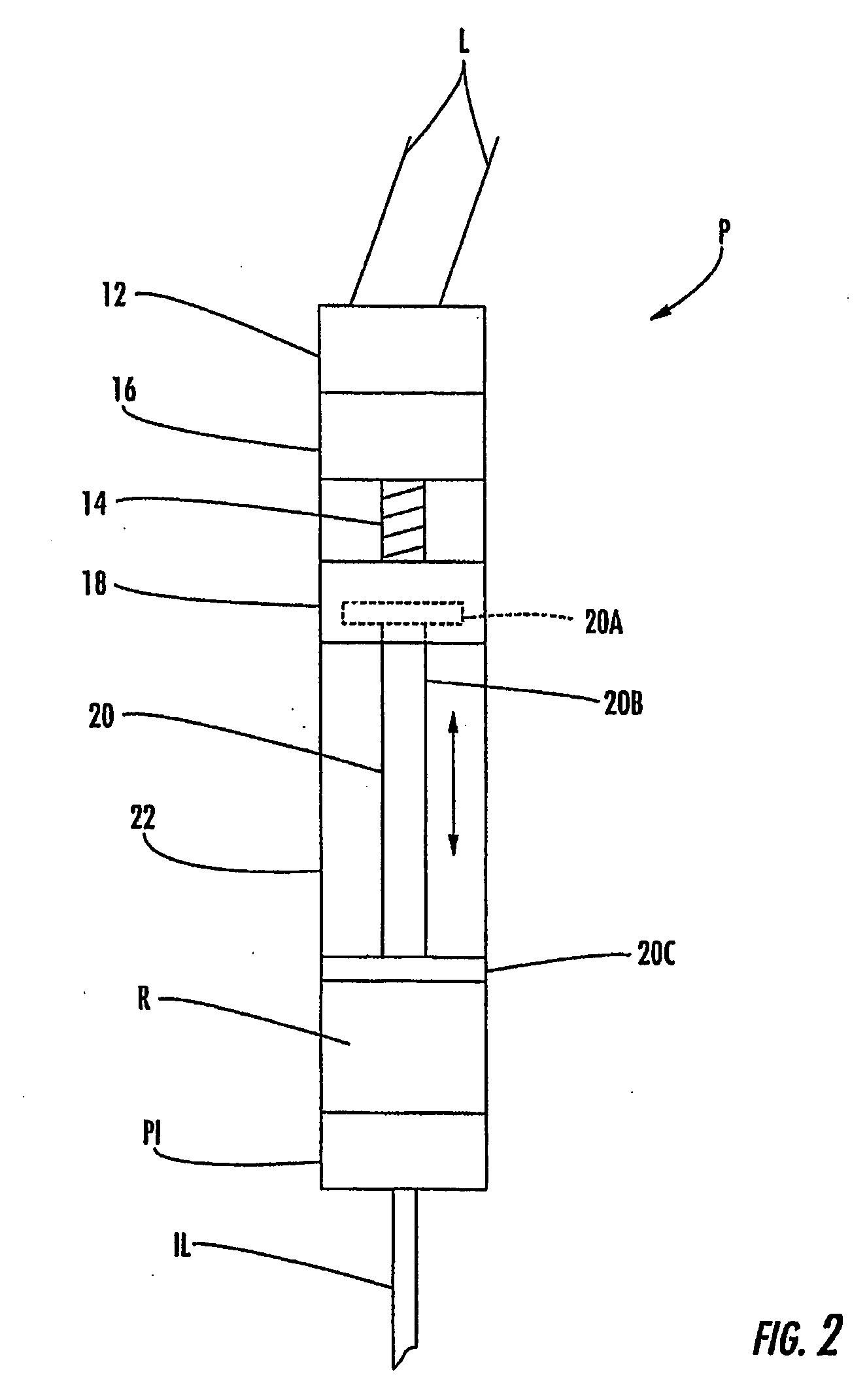Microfluid based apparatus and method for thermal regulation and noise reduction
a technology of microfluidics and auxiliary devices, applied in lighting and heating apparatus, laboratory glassware, instruments, etc., can solve the problems of inability to mix concentration gradients and particularly continuous gradients, limited number of concentrations measured, and technologic limitations, so as to minimize thermal pumping, reduce noise in the resulting signal, and minimize thermally driven movement
- Summary
- Abstract
- Description
- Claims
- Application Information
AI Technical Summary
Benefits of technology
Problems solved by technology
Method used
Image
Examples
Embodiment Construction
[0047]Microfluidic chips, systems, and related methods are described herein which incorporate improvements for reducing or eliminating noise in the fluid mix concentration. These microfluidic chips, systems, and methods are described with regard to the accompanying drawings. It should be appreciated that the drawings do not constitute limitations on the scope of the disclosed microfluidic chips, systems, and methods.
[0048]As used herein, the term “microfluidic chip,”“microfluidic system,” or “microfluidic device” generally refers to a chip, system, or device which can incorporate a plurality of interconnected channels or chambers, through which materials, and particularly fluid borne materials can be transported to effect one or more preparative or analytical manipulations on those materials. A microfluidic chip is typically a device comprising structural or functional features dimensioned on the order of mm-scale or less, and which is capable of manipulating a fluid at a flow rate ...
PUM
 Login to View More
Login to View More Abstract
Description
Claims
Application Information
 Login to View More
Login to View More - R&D
- Intellectual Property
- Life Sciences
- Materials
- Tech Scout
- Unparalleled Data Quality
- Higher Quality Content
- 60% Fewer Hallucinations
Browse by: Latest US Patents, China's latest patents, Technical Efficacy Thesaurus, Application Domain, Technology Topic, Popular Technical Reports.
© 2025 PatSnap. All rights reserved.Legal|Privacy policy|Modern Slavery Act Transparency Statement|Sitemap|About US| Contact US: help@patsnap.com



